As a high school humanities teacher in a small school, I do a lot of projects. I like to foster in my students a quest to find interesting information and to understand the world that they live in. As such, I spent a lot of time talking to our librarian about best research practices.
So, when she introduced our staff to the Question Formulation Technique (QFT) I was quite intrigued. She declared that this was going to have a major impact on how we were going to conduct research. I decided to give it a try a few times last spring with my Grade 8s and found that the research was pretty good and they seemed to be slightly more invested. However, I was not quite fully on board.
The students have “learned” but I wanted them to really own the material.
This fall, I decided to revisit the idea. I wanted to engage my highly active Socials 10 class on an issue that I am passionate about, namely the plight of Aboriginals within Canada. I have a lot of resource materials on this topic and have had students read through them and draw some conclusions. The students have “learned” but I wanted them to really own the material. So, this year I decided to divide the class into three key focus areas and have them generate their own questions.
I divided the class into three rather broad areas: Aboriginal Fishing Rights, Aboriginal Land Claims, and Residential Schools. We went through the QFT rules for generating questions: Ask as many questions; do not judge the questions, etc. We discussed the pros and cons of this process and reviewed the key question words (Who, What, When, Why, How) along with broader question words (Discuss, Explain, etc.). At first, the students seemed a bit uncertain of framing their own questions, as they wanted me to do that, but once I explained that this would help guide their research and, if they ran stuck, I would help them out. This seemed to alleviate some concerns. I also reassured them that they simply could not do this assignment incorrectly. They simply had to ask questions.
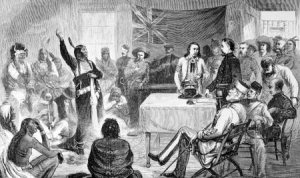
Then, each group set to generate questions based on their rather large topic area. Because the topics were quite broad, the questions came fast and furious. They ranged from basics like “What are land claims” to more complex “Are there unresolved issues?” Overall, I was pleased with the questions the students generated with no input from me!
I had the students follow the process as outlined in order to narrow their questions to four key questions. On the first day of going through the data, I roamed between the groups and realized that they had not picked the best questions. Some of the questions were simply too broad to be researched. Other questions were far too specific to generate meaningful research. Some of the students commented to me that they could not see the connection between their focus area and their questions.
Rather, than simply giving up or rephrasing the questions for the students, I decided to refine the process and go through the QFT again. Before the end of class, I had each group go through the QFT process again. Using the same QFocus, only this time, based on some initial research and pursuing ineffective questions, they were able to refine their questions. Because the students had a better background knowledge, they were able to generate more complex questions. Perhaps the questions were better because they were more familiar with the process or perhaps it was due to having a bit more information. Whatever the case, the students generated their own questions to guide their own research. . Again, we narrowed down the questions to four key focus questions.
This process showed me a few things. Firstly, it is important to have a clear and precise QFocus. Secondly, if the subject matter is not overly familiar, it may be necessary to provide a bit more background knowledge. Thirdly, and most importantly, it showed me the value of not only using QFT as a starting point for research but also as a way for students to check their own research as they go along.
By the end of the week, the groups had generated thoughtful and informative presentations to share with the class, based on their own research questions.After, I had the students reflect on all of the presentations and think of the overall issue of Aboriginal Rights in Canada.
We went through the QFT one more time to generate follow-up research questions. It was these questions that I was most proud of. After doing a lot of research and listening to their peers’ research, the students were able to generate even better follow up questions. I collected these questions and compiled them into one document for new groups to tackle. These questions extended their research from beyond a specific time period to cover a range of contemporary issues.
So, it was a success. Students were able to make the connections and to understand that the research process never ends. I made one change to the research process and it resulted in showing the students the value and true process of research!
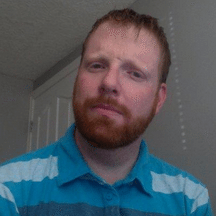 Quentin Flokstra is a High School Humanities Teacher at a small, independent school in Maple Ridge, British Columbia. He is currently pursuing a Masters of Educational Technology from the University of British Columbia. You can find him online at http://www.qflokstra.com and on Twitter @qflokstra.
Quentin Flokstra is a High School Humanities Teacher at a small, independent school in Maple Ridge, British Columbia. He is currently pursuing a Masters of Educational Technology from the University of British Columbia. You can find him online at http://www.qflokstra.com and on Twitter @qflokstra.
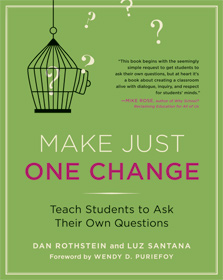
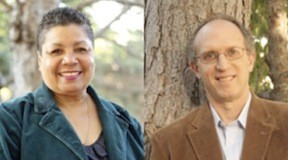

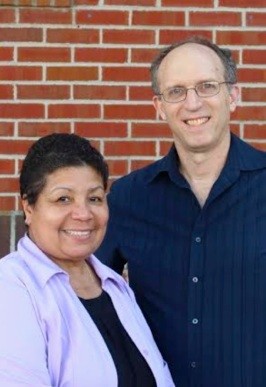
Speak Your Mind